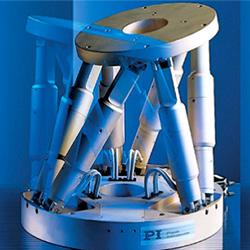Foxconn Replaces 60,000 Labourers With Robots in China
The Biggest Challenges of Data-Driven Manufacturing
China's Big Bid For Germany's Industry 4.0 Technology
RAPID 2016 - HP begins selling its Jet Fusion 3D printer; says it's 50% cheaper, 10X faster than others
German manufacturers take aim at smart factories, mass customization
Hannover Messe showcases Industry 4.0 innovations
These Five Exponential Trends Are Accelerating Robotics
Inside the Gigafactory That Will Decide Tesla's Fate
Three ways to leverage IIoT
The MakerBot Obituary
Disney files patent for near instantaneous 3D printing
Examining 'Industry 4.0′ opportunities in Japan
A Swarm Of 3D Printing Spiders Could Build Your Next Home
Bring 3D printed robots to life with 'Ziro' hand-controlled robotics kit
Obama and Merkel open HANNOVER MESSE
Records 1006 to 1020 of 1150
First | Previous | Next | Last
Featured Product

